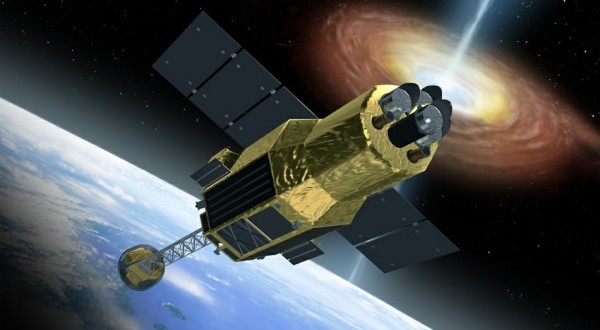The Japan Aerospace Exploration Agency (JAXA) is struggling to understand exactly what went wrong with its brand-new astronomy satellite, Hitomi, which suffered some sort of malfunction over the weekend and is apparently tumbling in space, according to a video captured by an amateur astronomer.
The X-ray telescope, dubbed Hitomi after its successful launch on February 27, was due to have started operations this week, but JAXA lost contact with it three days ago. The telescope has since been spotted tumbling in a small cloud of debris, but it appears all is not lost.
“By utilizing two opportunities of communicating with Hitomi, JAXA received signals from the satellite: the first time was at about 10:00 p.m. on 28 at the Uchinoura Ground Station, and the second one was at around 0:30 a.m. on 29 at the Santiago Tracking Station in Chile,” the agency said.
“JAXA has not been able to figure out the state of its health, as the time frames for receiving the signals were very short.”
The agency confirmed reports from the US Joint Space Operations Center (JSpOC) that chunks of debris were close to the telescope. Using radar at the Kamisaibara Spaceguard Center (KSGC) and telescopes at the Bisei Spaceguard Center, JAXA identified two objects in close proximity to the telescope, but couldn’t say what they were.
The telescope is now tumbling around in its orbit, rotating once every ten seconds. That would account for the brevity of the transmissions from the telescope, since it can’t focus its antennas onto a receiving station.
It’s still not known what caused the telescope to go out of control, but the US Air Force has reportedly ruled out the possibility of it being hit by debris. Instead, it’s likely that either a fuel leak or possibly even a battery explosion could be to blame.
JAXA will now work to get the telescope back online, and the agency does have a reputation for being able to get damaged spacecraft back on track, even if it takes years of patient effort to do so.
In 2010, the atmospheric probe Akatsuki was supposed to have inserted itself into orbit around Venus, but its engines failed to fire on time. JAXA spent the next five years using auxiliary thrusters to jockey the probe into position.
It’s hoped some kind of hack can be performed on Hitomi to bring the telescope back online, but it all depends on what kind of damage it suffered. JAXA has promised more updates as soon as possible.
Agencies/Canadajournal
 Canada Journal – News of the World Articles and videos to bring you the biggest Canadian news stories from across the country every day
Canada Journal – News of the World Articles and videos to bring you the biggest Canadian news stories from across the country every day




More out of control space junk.Another man influenced toxic garbage dump?This is what space has turned into.Shame really.